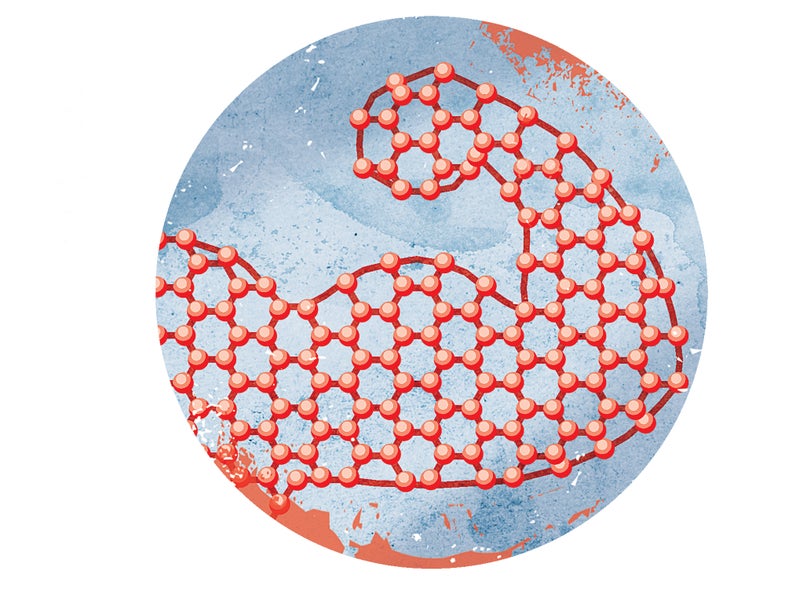Big Idea: The Rise Of Supermaterials
The 2D revolution is here

Engineers are taking materials into a whole new dimension: the second dimension. By transforming 3D clumps of atoms into 2D sheets, researchers are finding amazing untapped potential in ordinary-seeming elements.
The 2D revolution began more than a decade ago with the discovery of graphene, a mesh of carbon atoms linked together like the wires in a chain-link fence. It’s transparent but more than 200 times stronger than steel, nearly impermeable, and an excellent conductor. Turning graphene into practical devices has been a challenge, but teams are now closing in on a few: ultra-high-density computer flash memory, a broadband radiation detector, and a tool for precision medical imaging.
Other 2D materials might prove even more impressive. Scientists have begun creating analogous meshes of silicon (silicene), phosphorous (phosphorene), germanium (germanene), and tin (stanene). Silicon and phosphorus are particularly well-suited to making atomic-scale transistors that could lead to extremely fast, efficient, flexible electronics.
The goal for 2016 is to mix and stack flat materials to combine their best qualities. A team at Lawrence Berkeley National Lab has started building 2D sheets that function as a laser, with applications that range from quantum computing to—ironically—3D displays.
This article was originally published in the January/February 2016 issue of Popular Science, as part of our Big Ideas Of 2016 feature.